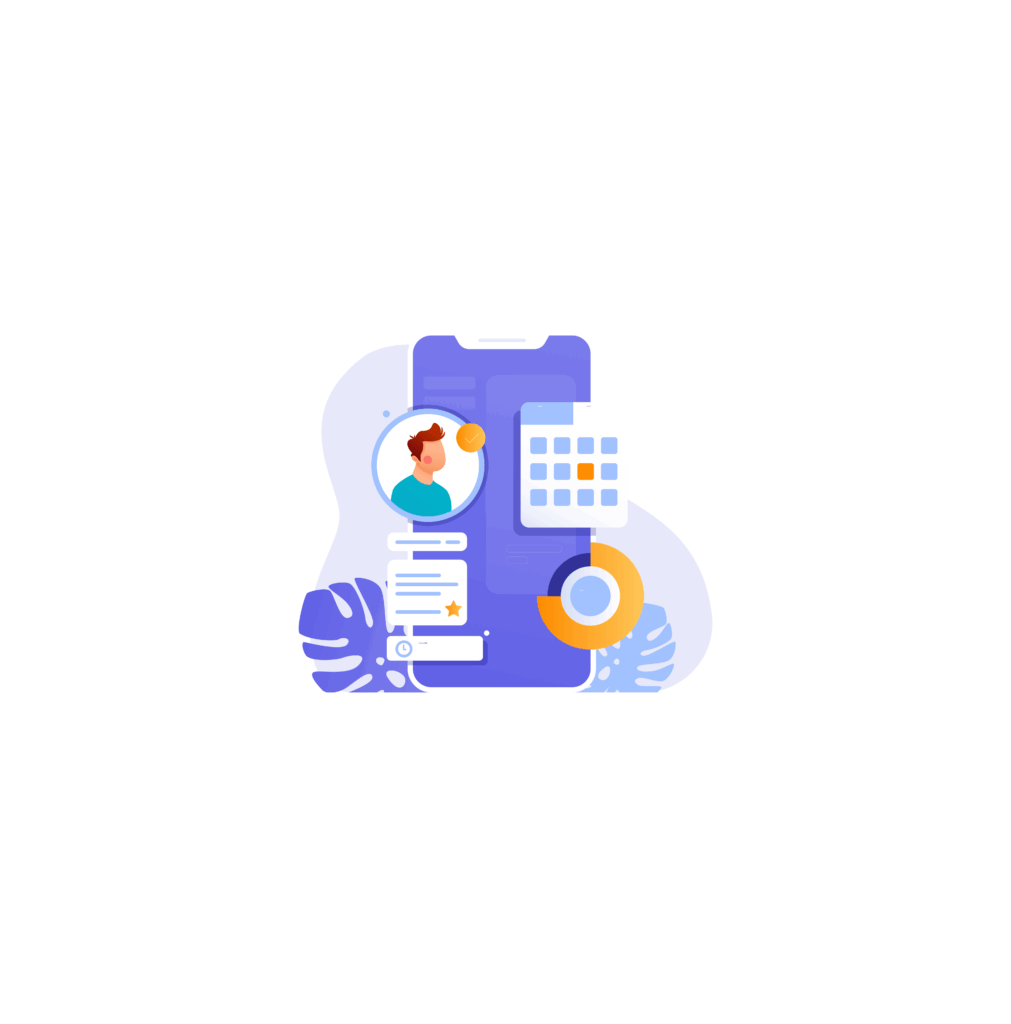Are you looking for ways to scale up your business? One of the most important aspects of achieving success is performance optimization. In this blog, we will guide you through the essential elements of performance optimization that you need to know. We will begin by discussing key performance metrics, including KPIs and accurate metric collection. Then we will take a deep dive into evaluating work, resource, and event metrics. We will also explore the role of CPU utilization in performance optimization and why alternative metrics can be more effective. Additionally, we will cover performance engineering and its impact on scalability, as well as network management and profiling/timing techniques. Lastly, we’ll delve into exciting innovations in performance optimization techniques that can help your business achieve even greater heights.
Understanding Performance Metrics
Performance metrics are integral for system optimization, aiding in identifying bottlenecks and establishing a performance baseline. The role of data structures and algorithms is crucial in analyzing these metrics for effective performance optimization. Accurate performance metrics are essential for gauging the overall health of the system and making informed decisions. By understanding and leveraging performance metrics, organizations can proactively address performance issues and enhance the user experience. Embracing client-side caching and managing browser defaults can optimize performance and improve loading times.
Defining Key Performance Indicators (KPIs)
Defining the right KPIs is crucial for effective performance management and actionable insights for enhancement. Utilizing machine learning techniques for KPI prediction and analysis can provide valuable insights. Additionally, well-defined KPIs are fundamental for gauging system performance, making them essential for measuring and improving overall system performance. Incorporating client-side caching and optimizing browser defaults can significantly contribute to enhanced performance, along with prioritizing fonts for efficient rendering. Embracing these NLP terms can undoubtedly complement the definition and utilization of KPIs in performance optimization.
Importance of Accurate Metric Collection
Accurate data collection forms the bedrock of reliable performance analysis, driving better performance optimization techniques. It’s crucial to employ proper data collection methods for obtaining accurate performance metrics. Additionally, implementing content delivery networks can significantly enhance the efficiency of metric collection, further empowering informed decision-making for performance optimization. The high-quality metric collection also lays the foundation for effective scaling-up strategies. In essence, accurate metric collection is essential for ensuring that all performance optimization efforts are based on trustworthy and insightful data.
In addition, here’s an article on Why Should You Use Performance Monitoring Apps For Your Business?
Deep-Dive into Performance Metrics
Evaluating system performance through work metrics is essential for gaining valuable insights. Deep analysis of event metrics can reveal underlying performance issues that need to be addressed. Identifying performance bottlenecks through resource metrics is crucial for optimizing overall system performance. It’s also important to leverage performance metrics for client-side optimization, ensuring a seamless user experience. Additionally, accurate performance metrics are pivotal in shaping effective performance optimization strategies and driving continuous improvements and scalability.
Evaluating Work Metrics
Evaluating work metrics unveils valuable insights into system performance, fueling effective performance enhancement. Leveraging machine learning algorithms for this analysis can be pivotal. Work metrics serve as key elements in grasping system performance, and their assessment is vital for detecting performance issues. By delving into work metrics, businesses can gain a deeper understanding of their systems, pinpoint areas for improvement, and propel their performance optimization strategies forward. This positive approach to evaluating work metrics opens up new avenues for system refinement and advancement.
Understanding Resource Metrics
Effective management of system resources is crucial for achieving optimal performance. By analyzing resource metrics, businesses can identify and address performance bottlenecks, leading to enhanced system optimization. Utilizing data caching techniques can further improve resource metrics performance, ensuring efficient utilization of client-side resources. Understanding resource metrics provides valuable insights into system performance, aiding in the seamless functioning of browser applications. By evaluating and enhancing resource metrics, businesses can ensure default fonts and cache settings are optimized, leading to an improved user experience.
Decoding Event Metrics
Effective analysis of event metrics grants valuable insights into system performance issues, paving the way for optimization. The ability to decode event metrics is instrumental in the pursuit of enhancing performance. Leveraging machine learning for predictive event metrics analysis presents an innovative approach to preemptively address potential performance problems. Understanding event metrics is pivotal for the proactive identification and resolution of performance impediments, contributing to overall system enhancement. The thorough analysis of event metrics forms a cornerstone in the continuous endeavor to elevate system performance.
Moreover, an article about User Engagement and Gamification: A Winning Combo might interest you.
The Role of CPU Utilization in Performance Optimization
Understanding how CPU utilization metrics are pivotal for system performance assessment is crucial. Effective analysis of CPU utilization plays a key role in optimizing performance. Complementary metrics can further enhance the evaluation of performance, providing comprehensive insights. Comprehending CPU utilization metrics is vital to drive system optimization and identify potential performance bottlenecks. The utilization of proper CPU metrics plays a significant role in improving overall system efficiency and productivity.
Why CPU Utilization Can Be Misleading
When evaluating system performance, CPU utilization metrics may not always provide an accurate reflection. It’s essential to consider alternative metrics to complement CPU utilization for a more comprehensive performance evaluation. Relying solely on misleading CPU utilization metrics can significantly impact decision-making for performance optimization. By incorporating alternative metrics alongside CPU utilization, the analysis of system performance is enhanced. Understanding the limitations of CPU utilization is crucial for making informed decisions regarding performance optimization.
Alternative Metrics to CPU Utilization
Complementing CPU utilization, alternative metrics offer valuable additional insights, enhancing the accuracy of performance assessment. Their effective incorporation aids in comprehensive performance analysis and provides a holistic view of system evaluation. Moreover, leveraging machine learning algorithms for predicting and analyzing alternative metrics further enriches the assessment process. By embracing alternative metrics, organizations can gain a more comprehensive understanding of their system’s performance, paving the way for informed decision-making and improved scalability.
Performance Engineering and Its Impact on Scalability
Performance engineering is pivotal for enhancing software system performance, with a primary focus on improving response time to elevate user experience. This process also plays a critical role in identifying and addressing performance bottlenecks within the system, by utilizing performance metrics to pinpoint areas of improvement. Additionally, performance engineering involves the optimization of data structures and algorithms, which are essential for achieving better overall system performance and scalability. By implementing performance engineering techniques, organizations can ensure a smoother and more efficient software operation for their clients.
How Performance Engineering Enhances Scalability
To enhance system performance under given time constraints, performance engineering employs optimization techniques to reduce latency and improve overall performance. Utilizing caching, content delivery networks, and optimizing server-side and client-side performance ensures better performance. By addressing performance problems systematically, performance engineering plays a crucial role in scalability. Implementing effective client-side caching and leveraging the browser’s cache for default fonts can further enhance overall system performance.
Additionally, check out an article on QA Testing and Automation to know more about Quality Assurance testing and automation.
The Optimization Drill: Modify, Monitor, Repeat
A continuous focus on monitoring key metrics and modifying code is essential for performance optimization. By continuously monitoring performance metrics, one can effectively identify and address performance bottlenecks. The process of modifying code leads to gradual improvements in the system’s performance over time. It’s crucial to repeat the optimization process consistently to ensure sustained performance enhancement. This drill of modifying, monitoring, and repeating the optimization process is vital for achieving and maintaining optimal performance.
Steps to Optimize Performance
Identifying and addressing performance bottlenecks is crucial for optimization. Analyzing and optimizing queries can enhance client-side performance. Additionally, optimizing CSS and JavaScript can significantly impact the browser’s rendering process, thus improving default font loading times. Caching data and content can also enhance client-side performance by reducing server response time, making the browsing experience smoother. By implementing these steps, you can effectively optimize performance and create a positive impact on user experience.
The Continuous Cycle of Modification and Monitoring
Ensuring sustained performance involves a continuous cycle of modification and monitoring, leading to improved system performance. By continuously monitoring in real-time, performance issues can be identified readily, while regular code modifications address performance bottlenecks. This iterative process results in the gradual improvement of system performance. The optimization endeavor necessitates continual monitoring and code modification, emphasizing the importance of this cyclical approach for achieving and maintaining optimal performance.
Network Management for Performance Optimization
Optimizing network scanning is crucial for enhanced system performance. Efficient bandwidth usage directly impacts overall performance. Leveraging content delivery networks (CDNs) significantly boosts performance. Improving server and client-side performance is fundamental for optimal system function. Quality of service (QoS) optimization ensures a superior user experience. Additionally, enhancing caching mechanisms on the client side and optimizing browser default fonts can further elevate performance. Embracing these strategies guarantees a positive impact on the overall system performance.
Network Scanning and Its Role in Optimization
Identifying performance issues and bottlenecks is a crucial function of network scanning, playing a vital role in optimizing bandwidth usage for improved performance. By addressing performance issues and optimizing network latency, it ensures better performance and bandwidth usage. Additionally, network scanning is essential for identifying and resolving performance issues related to bandwidth, making it an indispensable tool for overall performance optimization. The effective use of network scanning contributes significantly to the enhancement of overall system performance.
Profiling and Timing in Performance Optimization
Profiling and timing play a crucial role in performance optimization, aiding in the identification of performance bottlenecks and troubleshooting. These techniques are essential for improving system performance and response time by optimizing code execution. By utilizing profiling and timing, performance issues can be addressed effectively, leading to enhanced client-side experience and decreased browser load times. Furthermore, cache and default font optimization contribute to faster loading speeds, ultimately improving user experience. Incorporating these techniques ensures better performance and a positive user interaction with the system.
Significance of Profiling and Timing
Identifying performance bottlenecks and optimizing system response time are critical in performance optimization. Profiling and timing techniques play a pivotal role in achieving better system performance by addressing performance issues and bottlenecks. They are essential for troubleshooting code execution and enhancing overall system performance. By utilizing profiling and timing, organizations can optimize their systems, leading to improved client-side experiences, efficient cache management, and faster browser loading times. The implementation of default fonts and effective caching strategies further amplifies the impact of these techniques, contributing to superior performance optimization.
How Profiling and Timing Improve Performance
By optimizing code execution and resource usage, profiling and timing techniques significantly enhance system performance and response time. They address performance issues and bottlenecks, ensuring sustained performance improvement. Profiling and timing play a crucial role in improving software performance, contributing to better overall system performance. These techniques are essential for achieving better performance, and their utilization is key to addressing and enhancing system performance and response time. By implementing profiling and timing, software systems experience improved performance and better resource management.
The Future of Performance Optimization
The future of performance optimization holds the promise of delivering a superior user experience. Ongoing innovations in performance optimization are effectively enhancing system performance by addressing key bottlenecks. The evolution of performance optimization techniques is geared towards minimizing response time and maximizing efficiency. Furthermore, with advancements in machine learning, the future will witness a revolutionary transformation in performance optimization, ensuring seamless and swift operations. Ultimately, the focus of the future will be on elevating user satisfaction through enhanced performance and responsiveness.
Innovations in Performance Optimization Techniques
Cutting-edge algorithms driven by machine learning are revolutionizing performance optimization, propelling systems to new heights of efficiency and responsiveness. Content delivery networks continue to undergo exciting innovations, reshaping the landscape of performance optimization techniques. Data structures play a pivotal role in optimizing performance, leveraging advanced techniques to achieve unprecedented speed and reliability. Moreover, advanced caching mechanisms are elevating the system’s performance optimization, ensuring lightning-fast responses and seamless user experiences. Furthermore, client-side performance optimization is yielding significant improvements in key metrics, enhancing overall system performance.
How Can Performance Optimization Further Evolve to Aid in Scaling Up?
Performance optimization can continue to evolve by focusing on optimizing latency, enhancing caching mechanisms, evolving content delivery networks, improving server response time, and utilizing advanced algorithms. These advancements will aid in scaling up system performance and ensuring efficient scalability.
Conclusion
In conclusion, performance optimization is key to scaling up your business. By understanding and analyzing performance metrics, you can identify areas for improvement and set clear goals with defined KPIs. It’s important to accurately collect and interpret data to make informed decisions. CPU utilization may not always be the best indicator of performance, so exploring alternative metrics is crucial. Performance engineering plays a vital role in enhancing scalability by proactively addressing potential bottlenecks. The optimization process involves continuously modifying and monitoring your systems for optimal performance. Network management, profiling, and timing are also important components of performance optimization. Looking ahead, there are exciting innovations in performance optimization techniques that can further aid in scaling up. To learn more about how performance optimization can benefit your business, get in touch with us today.
Frequently Asked Questions
What are some common issues that can affect website performance?
Common issues that can impact website performance include large image file sizes, poorly optimized code or outdated plugins, slow server response times, and not using a Content Delivery Network (CDN). These factors can lead to slow page load times and website errors.
How can I measure the performance of my website?
To measure the performance of your website, utilize tools like Google Analytics, GTmetrix, or Pingdom. Key metrics to track include page load speed, bounce rate, and time on site. Regularly monitor and optimize your website using caching, compression, and image optimization techniques to improve performance.
What are some strategies for optimizing website performance?
To optimize website performance, you can reduce page load time by minimizing the size of images and media files. Distribute website content across multiple servers using a content delivery network (CDN). Remove unnecessary plugins and scripts to optimize code. Regularly test website performance and make necessary updates.



